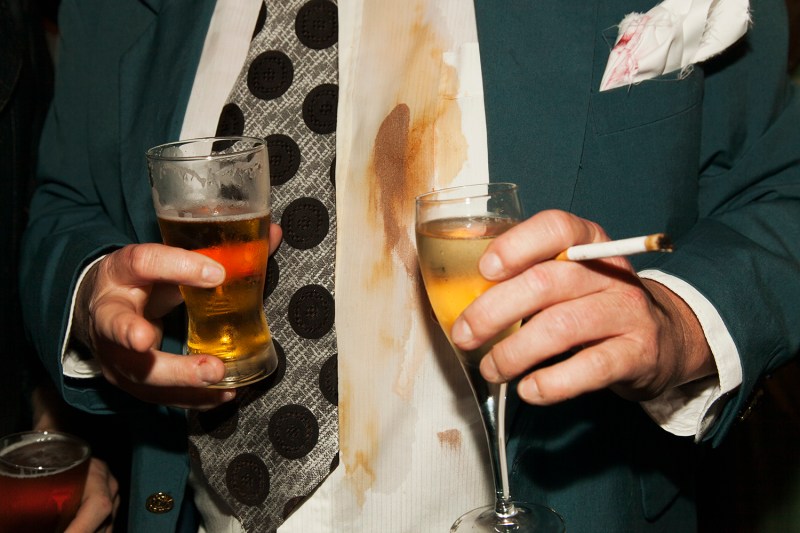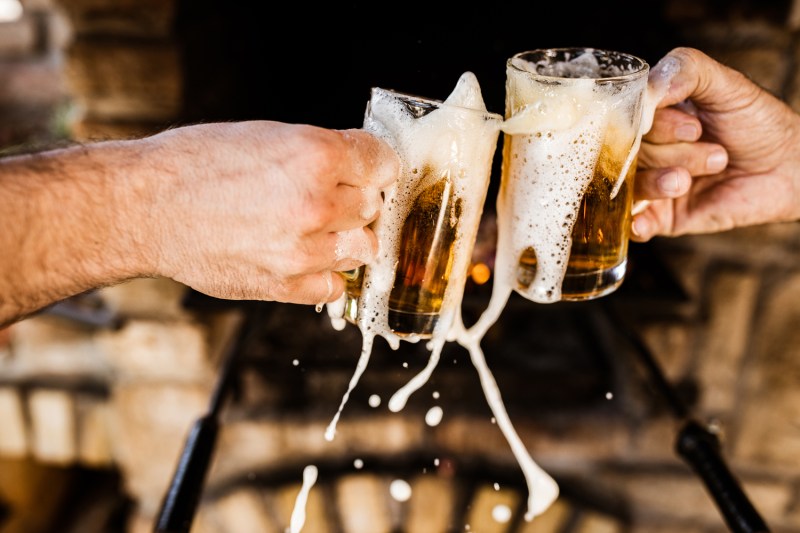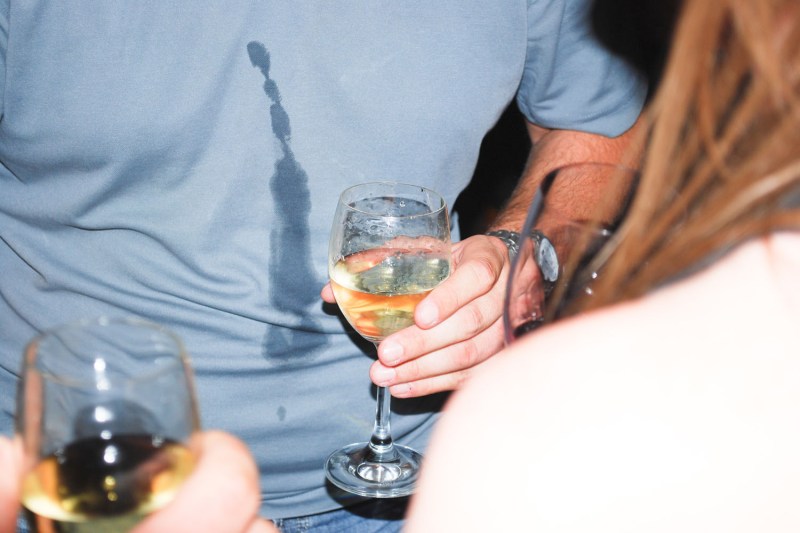
We’ve all been there. You’re at a cocktail party and someone bumps into you and spills your drink all over you. You brush it off with a laugh telling them it’s fine when really, two things just happened. First, the best beer or cocktail was just wasted, and second, it’s soaking into your clothes. Don’t worry, we have some pretty foolproof tips on how to remove those stubborn spills before they start to ruin your clothes or start to smell.
When it comes to stain removal, some things work better than others, and others just don’t work well at all. We looked at a variety of methods and found that there are different ways to treat stains depending on the liquid. Below, we’re going to show you how to remove liquor and beer stains from your clothes using said methods.
Related Guides
How to Remove Beer Stains

Beer stains seem easy enough to get rid of but you also run the risk of the stain drying and then starting to smell. You know the smell — that stale beer smell that you notice the day after let’s say, a backyard BBQ party.
Method 1
The trick for beer stain removal is to apply some liquid soap, whether it’s dish soap or laundry, it doesn’t matter, but you need to mix it with some lukewarm water. Grab a clean towel or a sponge and dab at the stain until it’s gone.
Method 2
If for some reason you didn’t get to the stain while it was fresh, you can mix some baking soda and liquid detergent together, use an old clean toothbrush, and rub it into the stain. Let it sit for 5 to 10 minutes. Rinse with some lukewarm water. The baking soda will act as an odor absorber and will grab any remnants of that pesky beer odor. A variation of this method is to just let the cleaning mixture sit on the stain and then after 5 or 10 minutes, toss it into the washing machine and wash normally.
Method 3
Another popular method is to soak the garment in lukewarm water, vinegar, and liquid detergent for about 15 minutes. You can wring out the garment. Then add some rubbing alcohol to a clean cloth or sponge and gently dab the stain. For stubborn stains, you can add some stain pre-cleaning solution to it and toss it into the washing machine and wash as normal.
How to Remove Liquor Stains

Most clear liquors on the market don’t really stain except maybe for water rings on the tables. Darker liquors such as whiskey, rum, and some tequilas do have the potential to stain clothes.
Method 1
Use a mixture of laundry soap, vinegar, rubbing alcohol, and water. Take a cloth and dip it into the cleaning solution and blot the stain until clean.
Method 2
Mix together liquid soap and cool water. Using a sponge or clean cloth, use the cleaning solution to dab at the stain until removed. Once the stain is removed, use clean cold water to remove the cleaning solution. If necessary, repeat these steps to clean the stain.
Method 3
This method is similar to the beer cleaning method 3. Here you will use lukewarm water, liquid detergent, and some vinegar. Let the clothes sit for 10 to 15 minutes. Rinse the stain and then add rubbing alcohol with a clean sponge to the stained area. Then finish soaking for 20 to 30 minutes in lukewarm water with a presoak cleaner and wash as normal.
How to Remove Wine Stains
Red wine is probably one of the biggest stain makers out there. Once set, it can be nearly impossible to remove. There are a few cleaning treatments you can follow that will help clean up any stain as long as it’s taken care of quickly. Here, we outlined two methods for how to remove wine stains from clothes.
Method 1
Mix together equal parts hydrogen peroxide and liquid soap. Use a soft bristle brush such as a toothbrush and rub the mixture into the stain. Let the cleaning mixture soak into the stain for up to an hour. Use lukewarm water to rinse the cleaning solution from the stain. You may need to repeat these steps a couple of times to remove the stain completely. Then wash as normal.
Method 2
Take some of the best hairsprays and saturate the stain, let it sit for roughly 5 to 10 minutes then wash in hot water. When working with stains, remember to clean them as quickly as possible without letting them set in. You will have a much better chance of removing the stain if it’s fresh. That’s not to say you can’t remove it, but you may need to repeat some steps a few times to ensure you get all of the stain out.
You can even use these methods on upholstery, blankets, cloth napkins, pillows, or basically anything made of cloth. Just make sure that as you rub or blot the stain that you are careful to not damage the material by putting too much pressure on the cloth, which may separate the threads.



